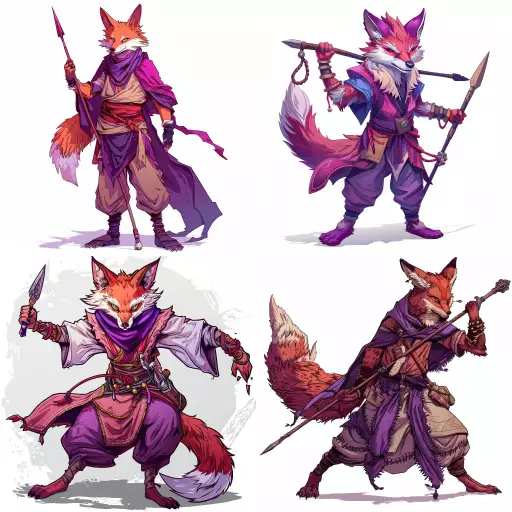Explore the Best AI Image Gallery

Pixels on Skin: AI-Generated Images and the Art World
The world of art is in constant flux, always adapting to new technologies and perspectives. Lately, a particularly intriguing development has taken center stage: AI-generated images. Powered by complex algorithms and vast datasets, these systems can create stunning visuals, from photorealistic landscapes to abstract compositions. This technological leap has sparked intense debate within the art world, raising questions about the nature of creativity, the role of the artist, and the future of artistic expression.
A New Canvas: Exploring the Potential of AI Art
AI-generated images offer a plethora of exciting possibilities for artists, designers, and even everyday individuals.
- Concept Visualization: Artists can use AI to quickly generate visual representations of their ideas, exploring different concepts and iterations before committing to a final piece.
- Style Exploration: AI algorithms can be trained on specific artistic styles, enabling artists to experiment with diverse aesthetics and create works that blend their vision with the influence of masters from various periods.
- Personalized Art: Imagine commissioning an AI to create a unique artwork based on your preferences, incorporating elements from your favorite artists or even incorporating personal photographs into the composition. This opens up a world of personalized art experiences.
Beyond Aesthetics: The Broader Impact on Creativity
The influence of AI-generated images extends beyond the realm of aesthetics. It has the potential to reshape how we approach creativity as a whole:
- Democratization of Art: By providing accessible tools for image creation, AI can empower individuals who may not have traditional artistic training to express themselves visually.
- Collaboration and Experimentation: Artists can collaborate with AI systems, leveraging their strengths to push creative boundaries and explore innovative concepts. The artist becomes a curator and collaborator, guiding the AIs output and adding their unique human touch.
- New Forms of Expression: AI-generated images may pave the way for entirely new forms of artistic expression, blurring the lines between art, technology, and interactive experiences.
Navigating Ethical Considerations
As with any powerful technology, AI-generated images raise important ethical considerations that need careful attention:
- Authorship and Ownership: When an AI creates an image, who owns the copyright? Is it the developer of the AI system, the person who provides the input data, or the user who generates the final output? These questions require clear legal frameworks to ensure fair attribution and intellectual property rights.
- Bias and Representation: AI algorithms are trained on vast datasets, which can inadvertently contain biases that reflect societal prejudices. Its crucial to address these biases in training data to prevent AI-generated images from perpetuating harmful stereotypes or misrepresentations.
- Misinformation and Manipulation: The ability to create realistic images raises concerns about the potential for misuse, such as generating fake news content or creating deepfakes that can be used for malicious purposes. Its essential to develop safeguards and ethical guidelines to prevent the spread of misinformation and protect against manipulation.
The Future of AI-Generated Images: A Collaborative Canvas
The future of AI-generated images is brimming with possibilities. As technology advances, we can expect even more sophisticated systems capable of generating increasingly realistic and imaginative visuals. Its likely that the lines between human creativity and machine intelligence will continue to blur, leading to a new era of artistic collaboration.
The key to harnessing the full potential of AI in art lies in fostering ethical development and responsible use. By addressing the challenges and embracing the opportunities, we can create a future where AI-generated images enrich our lives, inspire creativity, and expand the boundaries of human expression.
](https://images.ai-img.art/thumbnails/150/157712d76865d557120f9baf988de3d0525225295a2789c89bf2c4a5a96a03d1.webp)






](https://images.ai-img.art/thumbnails/150/9d51c5e673b4f2068b7b01abc35425a06f173b76303adf9ad29ca14302c25b18.webp)








![**Representation: A dog acting as a private tutor to a child. The dog holds a ruler in its paw and stands at the blackboard to explain a dog diagram to the child. Graphic style: Line drawing, cartoon style, influenced by Franco-Belgian comics, thick black lines, simplified design, vector, black and white only, in the style of Keith Haring or the French comic strip "Alinéa". [IMPORTANT]: A single continuous line extending from one side of the image to the other, minimalist, strong outlines, line drawing, without lifting the hand, ultra-simplified, no shading, entirely white image, drawing created in the center of a sheet of paper. --ar 16:5** - Variations (Strong) by <@627984126871470085> (fast)](https://images.ai-img.art/thumbnails/150/f4e034998ccd869d8a061fd12017514fcd92210eb33d4222dc9b54716223f4dd.webp)
](https://images.ai-img.art/thumbnails/150/51c93500396faff4e7fa8b42bc68033067b16b2230e3496e95c482a581ff0fe9.webp)
![**Representation: A teenager smiling while thinking about a friendly dog, a comic-style thought bubble with a friendly dog inside. Graphic style: Line drawing, cartoon style, influenced by Franco-Belgian comics, thick black lines, simplified design, vector, black and white only, in the style of Keith Haring or the French comic strip "Alinéa". [IMPORTANT]: A single continuous line extending from one side of the image to the other, minimalist, strong outlines, line drawing, without lifting the hand, ultra-simplified, no shading, entirely white image, drawing created in the center of a sheet of paper. --ar 16:5** - <@627984126871470085> (fast)](https://images.ai-img.art/thumbnails/150/6fc850f638e3dee0c4b121acecad2c8419e02bdeac7f871d625f1003c1c3abe1.webp)





















![**Representation: A dog acting as a private tutor to a child. The dog holds a ruler in its paw and stands at the blackboard to explain a dog diagram to the child. Graphic style: Line drawing, cartoon style, influenced by Franco-Belgian comics, thick black lines, simplified design, vector, black and white only, in the style of Keith Haring or the French comic strip "Alinéa". [IMPORTANT]: A single continuous line extending from one side of the image to the other, minimalist, strong outlines, line drawing, without lifting the hand, ultra-simplified, no shading, entirely white image, drawing created in the center of a sheet of paper. --ar 16:5** - <@627984126871470085> (fast)](https://images.ai-img.art/thumbnails/150/7a854648a81e51241dcca8d24dd6e3bfcf07ad1df51baf401c9b729f4cf411fa.webp)



